Can You Tattoo Over Burn Scars? Or Is There Any Risk?
Scars can carry positive or negative memories in people’s life. Some carry it with pride, while others try to hide them. You may try to hide your scars with clothing, but what about a permanent solution? Many people who have burn scars consider hiding the scar with tattoos.
If you want to hide your scar with tattoos, you may ask- can you tattoo over burn scars?
Yes, it’s possible to tattoo over your scars with a particular design or skin recolor with your skin tone. However, you must ensure that the scar is at least a few years old. Keep reading this article to know more.
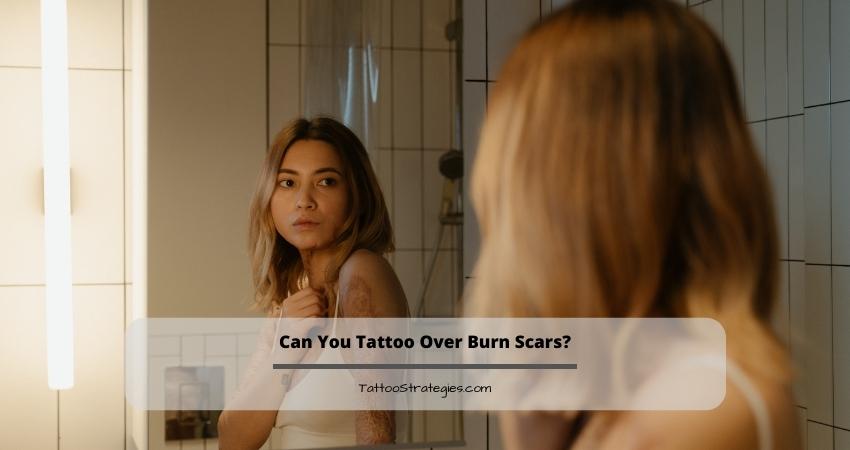
Can You Tattoo Over Burn Scars?
Yes. A scar-covering tattoo can restore confidence that has been damaged. Oftentimes, stretch marks have been tattooed to hide them because of insecurities.
Tattooing has so far been successful in lessening or masking the appearance and impact of scars and stretch marks. Unfortunately, a tattoo cannot conceal all scars or stretch marks. Some artists won’t tattoo scars if they believe they may damage the skin or the scar.
Because of this, scar covering is a difficult technique that goes beyond basic creative body designing. Whether or not a scar or stretch mark is worth the risk of getting tattooed depends on a lot of assessments and a variety of criteria.
Does Tattooing Over Scars Hurt more?
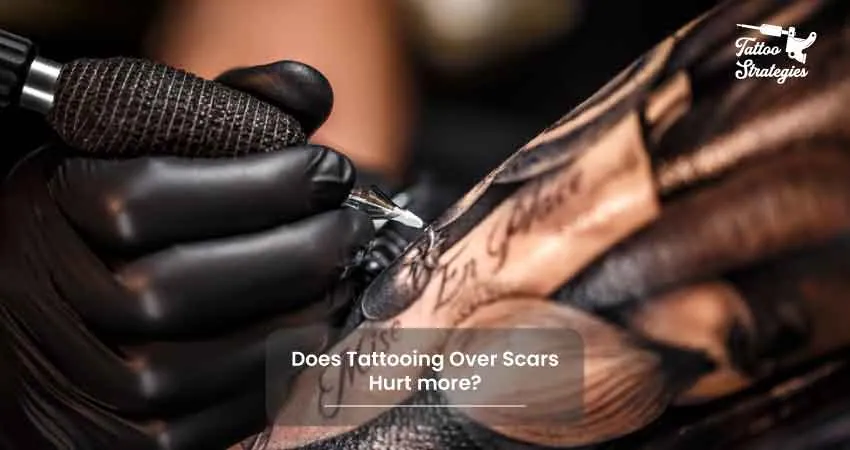
Different people have different levels of pain tolerance. Still, getting a tattoo over a scar is more painful than regular scars. In some other scenarios, it can be even more painful. According to experts, scar pain is common for those who have caused nerve damage or compression, for example, amputation scars.
Some types of scars tend to be more painful, such as:
- Burn scars
- Hypertrophic scars
- Atrophic scars
- Keloid scars
If you have a large or deep scar, it will be more painful for you to tattoo. However, tattooing over small or mild scars is less painful as the small scars lie flat to the skin.
You may also ask- how long should I wait to tattoo over a scar? Usually, a scar needs about one year to heal properly. Before getting a tattoo over the scar, you should wait until the scar has completely healed.
Is It Difficult to Get A Scar-Covering Tattoo?
Although a scar covering tattoo might be a bit painful for some people but isn’t that difficult to get. Still, for safety reasons, there are some factors you should be aware of before getting a tattoo over your scars- At first, the tattoo artist must examine the scar tissue on his or her own. So, let’s see the different levels of scars people can have-
Hypertrophic Scars
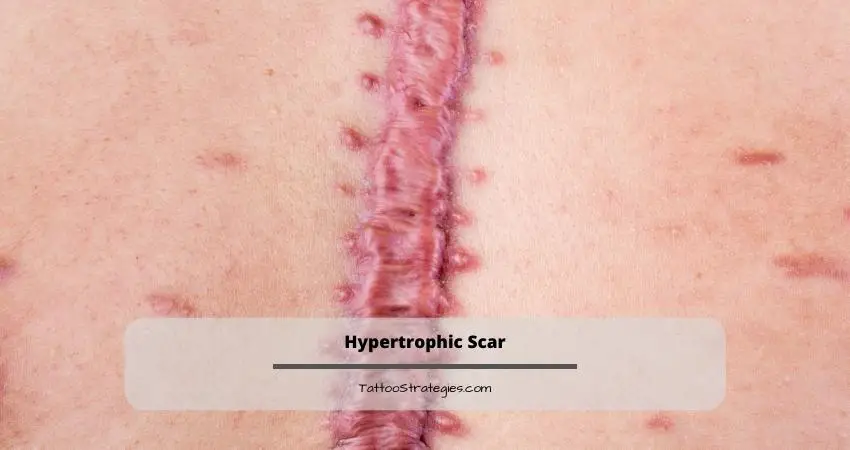
Burns and other minor injuries are the main reason for this kind of scar. In most cases, they are redder, thicker, and elevated above the skin’s surface. These kinds of scars need a year to be fully healed. So you should tattoo over these kinds of scars after they have healed properly, as then it won’t be much painful.
Keloid scars
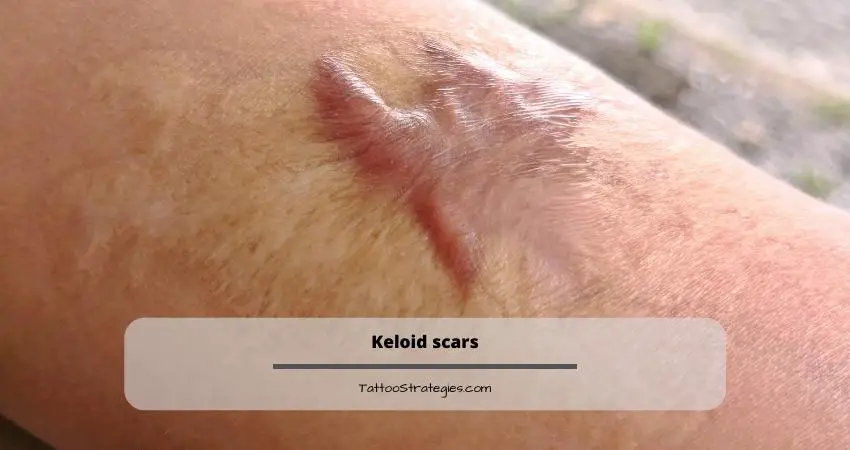
Because of serious injury, these kinds of scars occur. After 3 to 5 years, they are completely healed, and only then are they ready for tattooing. These scars frequently have an irregular shape and are thick and red. Before the keloid scar has fully healed, tattooing it might cause severe discomfort and scar reopening.
These kinds of scars are usually quite difficult to cover for tattoo artists. The tattoo artist makes the tattoo big so the tattoo can cover the scar properly. Additionally, because these scars are the hardest to cover, the tattoo that covers a keloid scar is sometimes quite large and has a complex design.
Atrophic scars
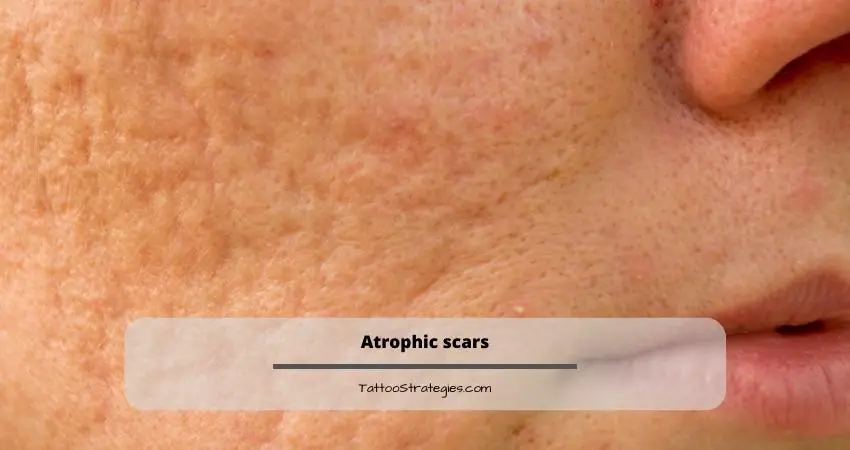
Atrophic Scars are typically soft and placed beneath the skin’s surface. They might appear as scars from minor surgery, burns, serious cuts, or stretch marks. Scars from chicken pox or acne also fall into this category. Atrophic scars are simple to tattoo and often safe due to their shape and look.
Finding the ideal design to cover the scar and allowing it to heal fully are both crucial. But because these scars are frequently discolored, it’s crucial to have a tattoo with various colors or simply a textured design.
Amputation/skin-removal scars
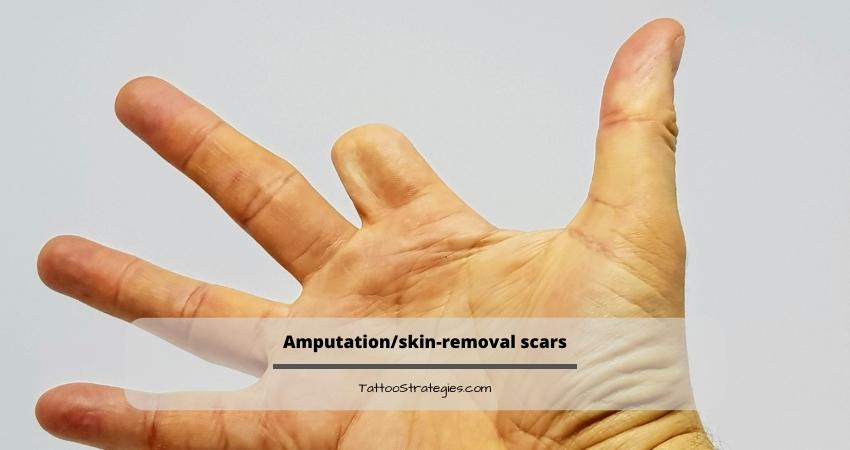
Scars from skin removal or amputation are visible after a body portion has been amputated. The skin is relatively smooth and fairly simple to tattoo when the scars have healed. These body portions could, however, have severe nerve damage, making tattooing impossible in such areas. Not to mention that getting a tattoo over skin-removal scars can be quite painful.
As you can see, you should consider numerous factors before getting a tattoo over your scar. So you should make sure to talk with a professional before getting a tattoo and also appoint such tattoo artist who has previous experience in tattooing over scars.
Who Should Not Get A Scar-Covering Tattoo?
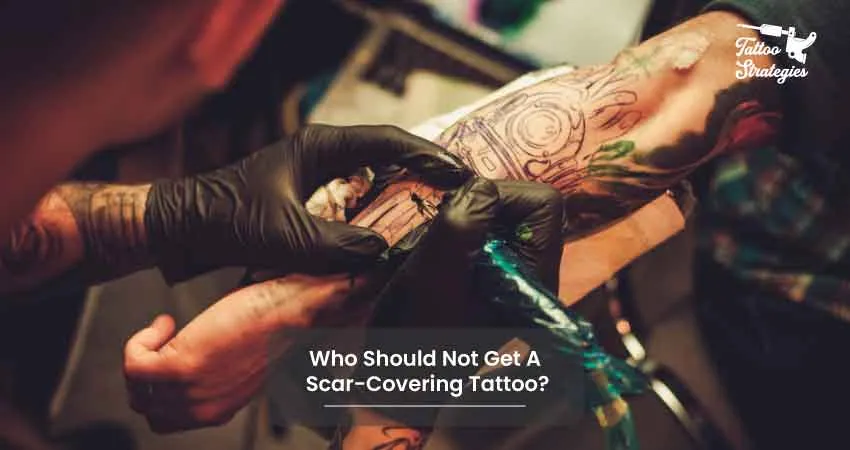
Scar covering tattoo will be problematic if you have:
- Fresh scar: Getting a tattoo over a new scar may open up the scar or cause it not to heal. This may result in several health issues and the reopening of scars. It will take twice as long for the tattoo to heal, and it could even become infected.
- Sunburnt skin: If your skin (or the scar) has been overexposed to the sun, you should avoid getting a tattoo of your scar. Consult a tattoo artist about the potential of getting a tattoo after your skin has recovered from sunburn damage.
- Weak immunity system: A scar tattoo needs proper time and energy to heal from the tattoo. A strong immune system makes the process a lot easier. For people who have a low immunity system, their scary tattoo takes a lot of time and care to heal.
If you have a low immune system, your tattoo may take a long time to heal. This can result in other complications.
How Do Burn Scars Affect Tattoo Healing?
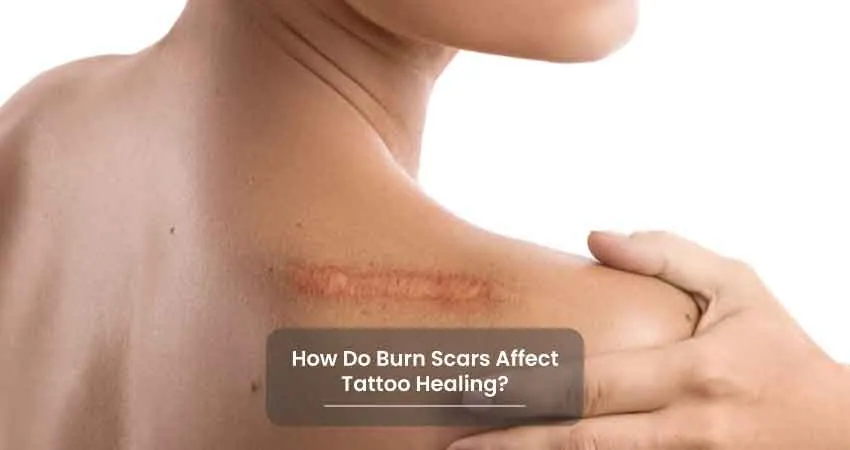
Normally, a tattoo takes up to one to three weeks to heal properly. It’s not different for burn scars. Usually, while the healing period is going on, you should disinfect the tattooed area regularly.
When the ink of your tattoo seeps into the scarred tissue, it can eventually spread, fade, and discolor in a complicated way. As the tattoo over your scar starts to heal, the colors can change, and the stencil work might look messy or faded.
It’s quite impossible to control how a tattoo heals, making it difficult to predict how your tattoo may look after the healing process.
Is There an Increased Risk of Infection?
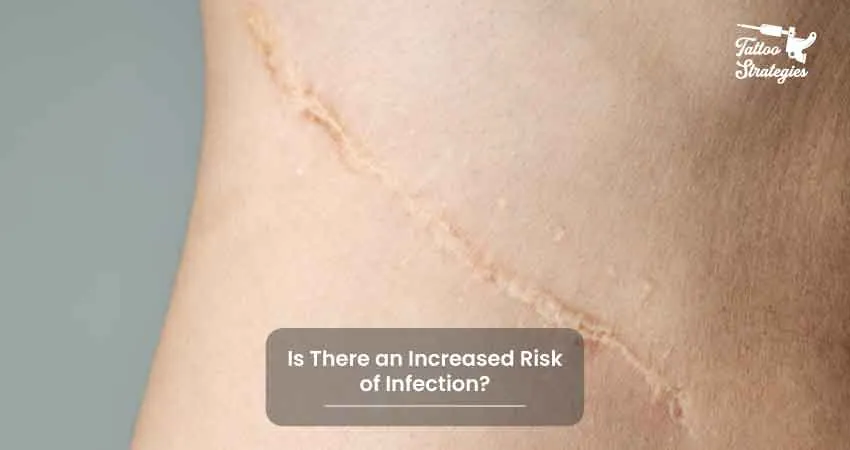
As there is always a chance of infection, the risk increases more if you tattoo over your burn scar. Not all scars are the same; sensitive scars are more prone to infection. So a must is to pay attention to the recommendations of your tattoo artist, along with taking proper care of your tattoo.
Even if an infection occurs, it’s still can be healed with proper care. Serious infection is a rare case, though. There are some symptoms of infection you need to be aware of-
Signs of infection include:
- Drainage or weeping
- Growing pain
- Fever
- Rash
- Unusual amounts of swelling
Can Sun-burnt Skin Be Tattooed?
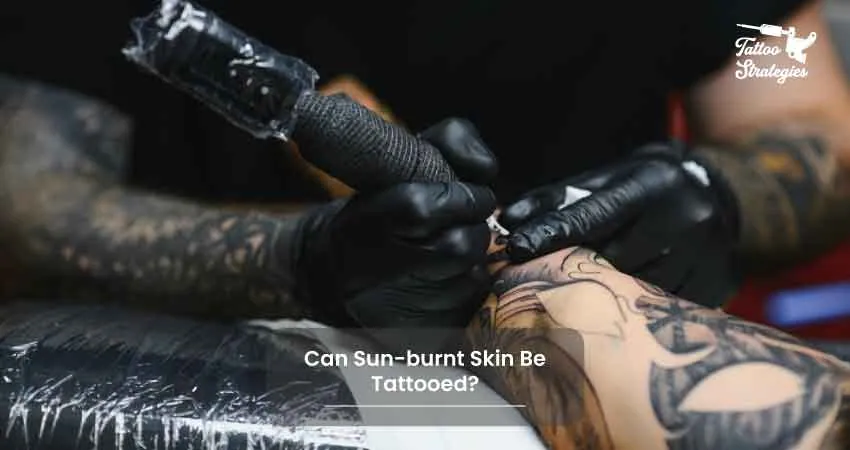
No, it’s not ideal for tattooing sun-burnt skin. Skin damage from sunburns needs time to recover. Sunburned skin would make tattooing more painful, but that isn’t the only concern here. The scarred area may not be suitable for tattoo ink. But still, you have to see the after result after you paid for the tattoo and deal with the aftercare.
What To Consider When Getting a Scar-Covering Tattoo
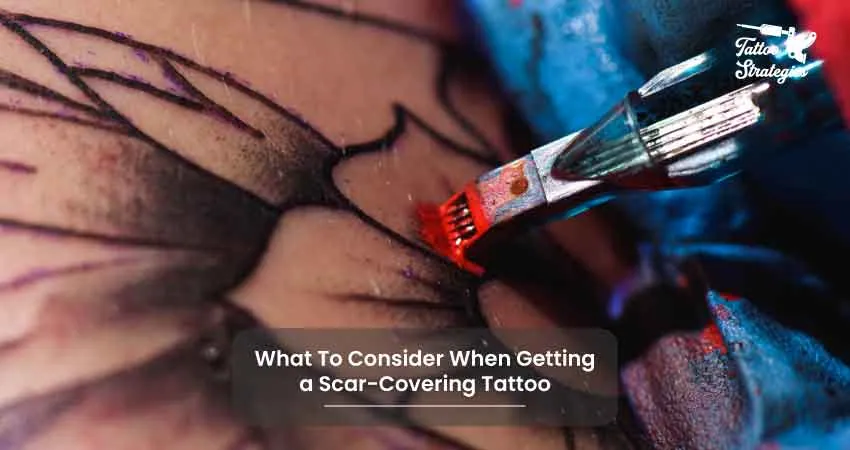
Getting a tattoo means lots of preparation and procedure. For scar-covering tattoos, the scenario is the same. Before getting a tattoo to cover the scar, here are things needed to consider:
- A professional tattoo artist: The tattoo artist should be consulted for an honest assessment of the scar because tattooing over some scars can be hard. They will examine how the scar is, its placement, and its suitability for a tattoo. Remember that the best scars for tattooing are those without edges, whereas scars with darker edges might not be appropriate.
- Considering the healing process: The scar must be healed before getting a tattoo. Usually, the healing phase takes about one to 3 years; this depends on the scar itself.
- Finding a skilled tattoo artist is crucial; you must choose one who has previously worked on scar-covering tattoos and is very competent. Due to the potential for complications and discomfort, you shouldn’t let a novice handle your scar.
- The tattoo artist needs to work hard and efficiently to do a tattoo that properly covers the scar. There is a chance the final design may be a bit rough due to the scar. Consider choosing a pattern that complements the texture of the scar. Choose more freely flowing designs than those that use linework and geometric patterns (like flowers, for example).
- Handling the pain: As we have discussed, having a tattoo that covers a scar can be extremely painful. Therefore, be sure to be both psychologically and physically prepared to undergo the tattooing session, taking into account the nature of the tattoo and the location of the scar. However, remember that scars that have just begun to heal hurt more than scars that have been healed for a while.
- Following the aftercare instructions and scheduling periodic follow-ups with your tattoo artist is essential if you want to avoid any complications, rashes, or infections. The tattoo artist will be able to tell if the tattoo is healing properly and will let you know if anything is needed to do.
It is typical for the scar to become inflamed, itchy, and elevated after getting a scar-covering tattoo. After a few hours, the scar tissue becomes normal. If the tissue becomes inflamed, you should contact a doctor immediately.
Conclusion
Did this article help you to find the answer?
We tried to answer any questions you may have in mind and also come up with solutions you might face. Not just the question but also what you should consider or not. Hope this article helped you uncover all the questions you had in mind.
